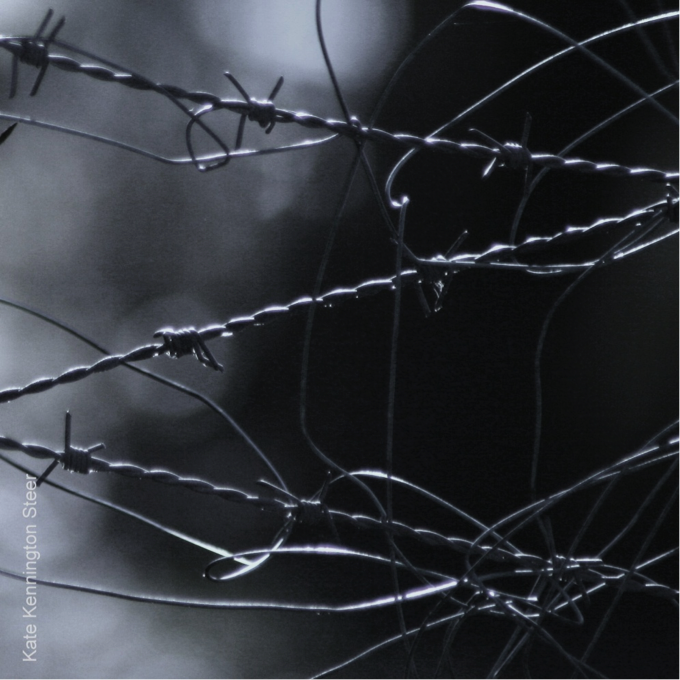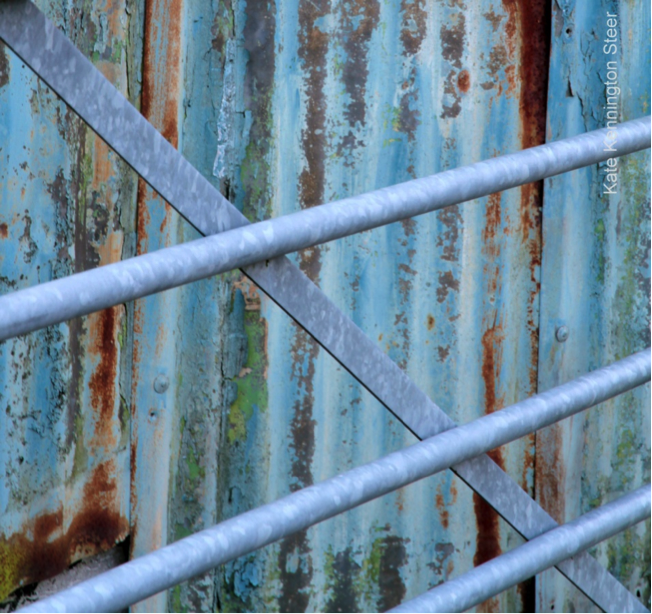When I was diagnosed with M.E. (Myalgic Encephalitis, or Chronic Fatigue Syndrome as it is now more commonly called) in 1989 I was a teenager with everything to live for. And yet, as I walked home from school one September day, my steps slowed and slowed until I staggered bent double into our house, feeling like I had aged 60 years in ten minutes. I never attended school again. But my headmaster’s reaction was that there was nothing wrong with me. He, like many of the other raft of medics from a range of different specialisms I was to see in the next two years, concluded:’ It’s all in your head.’
Once you have been told something often enough, particularly by those in a position of expertise and ‘authority’ over you, you take it deep inside yourself. My plaintive cry ‘but I don’t want to be like this’ held no value in their eyes. The fact there was a huge disconnect between what I was feeling in my body and what they were telling me was just in effect something I was making up, drove me to believe that indeed it was my head, my mind, that was at fault: I felt I was going mad. And so my heart very nearly broke and my spirit was utterly crushed. Despite all the fantastic loving support from family and close friends, still, the insidiousness of the little phrase ‘it’s all in your head’ (meaning it is actually somehow my fault that I am ill and that subconsciously I want to be ill): that belief has taken over twenty years of therapy to excavate from my soul. I carry within myself the brokenness that has engendered such self doubt over the years.
The consequences of this inner-soul quaking are numerous and wide ranging. I hope that I look on myself and others, indeed the whole of creation, with a little more compassion; although I am only too well aware that I often do not look hard enough for the pain and damage in others, and I still, God forgive me, often fail to take this into consideration when I am too quick to judge them.
Mostly where an understanding of brokenness reveals itself to me is in my creative life, where I am drawn to look below the surface of things, asking myself, and those who look at my work, to pause, however fleetingly, to find where God is in all of this. So I now understand why I have always been drawn to rust, and peeling paint, and barbed wire coils, and skips full of discarded objects, since I first started taking photographs as a teenager, even before I was ill. Perhaps a connection with frailty has always been ‘in my head’?
In the last year Christine Valters Paintner wonderful book Eyes of the Heart introduced me to the ancient Japanese art of wabi sabi, a deliberate expression of imperfection and impermanence; beauty is found in incompleteness, in humble things, and needs to be searched for in the least expected places. It demands a change of heart and mind to look through the surface of the world.
Sounds like Kingdom thinking to me.
And so now I have a contemplative name for what I have been attracted to for many years – it’s not just all in my head.
I was reminded of this at Christmas when a friend who is a wood-turner gave me a bowl he had made of Lacewood. (Lacewood is another name for London Plane trees, so called because the pressure they are under when they grow and form a new branch leave ‘wounds’ patterned like lace.) He said he had to give me this bowl because the beauty of this particular one was to be found in this wood’s scar tissue: that the so called ‘flaws’ are all about new growth happening. Needless to say I cried.
And it reminded me too of the comfort I draw from Richard Rohr’s story that the Navaho Indians always leave a deliberate ‘mistake’ in the pattern at the corner of their woven rugs so that the Spirit can enter in: all such rugs are considered incomplete without the Spirit embedded within them.
This is the ultimate Gospel paradox: we cannot be whole until we see, really recognise, the scars, the flaws and the brokenness are all part of the new creation we are called to be.
Kate Kennington Steer is a writer and photographer with a deep abiding passion for contemplative photography and spirituality. She writes about these things on her shot at ten paces blog.





10 comments
Thanks for sharing, Kate. I have a similar journey but with panic disorder, not widely recognized in 1987. After many tests I was declare healthy and fine – it was “all in my head”! What harmful words those are – causing one who already feels alienated and misunderstood to burrow deeper into despair and depression! Like you, I discovered a way out – with God’s help. The panic is gone but the underlying anxiety remains – – – a gift from God and reminder that I am only complete within the arms of my Creator.
Andy
The crippling effects of panic attacks are so misunderstood aren’t they? And hardly ever talked about by the Church – indeed they’re one of the reasons that I don’t feel comfortable attending a physical church service, however much I long for the communion with others.
I will be praying for you, and all those others who’ve left comments here that, as you say, we will remember in stillness and silence the place where we are, and miraculously, will be, whole and complete in our Creator. And that our woundedness will continue to be the means of Grace to enable us to reach out to others who might also be wounded and broken.
With all blessings
Kate
I too have chronic fatigue syndrome and fibromyalgia and recognise the ‘it’s all in your head …. pull yourself together… stop winging, and get on with life.’ syndrome. Now aged 76, and having had FM for 15 years, I have found that God takes the broken wounded me as his agent through whom he is able to help others. I still have a public ministry as a priest, and my wobbles, walking stick, and needing to sit down to preach and so on, seems to be an encouragement to others, who see that you don’t have to be whole or perfect to be used by God.
Dear Anne
The way you cope with all your ‘wobbles’ and adapt your priestly world to your illness (and adapt the expectations of your congregations to your wobbles no doubt too!) is an amazing encouragement to the rest of us. It is indeed a work of God’s Grace every time I find that sharing some of my woundedness is a source of comfort to others… And since it was you that introduced me to this blog and so became the means by which I maybe can encourage a few folk on here, you yourself have been a vehicle of Grace once more this week in this virtual community. Thank you.
All blessings
Kate
Hi Kate, I’m sorry that you are having to deal with this and you didn’t get the support you needed when it all began. I can hardly imagine how damaging that was to your spirit. I have fibromyalgia and it has been a frustrating journey since my diagnosis, but at least people now are beginning to understand that its more than just in your head. Although I wouldn’t wish chronic pain and fatigue on anyone, I know (as you have discovered) that they provide an opportunity for transformation and draw us closer to the source of all life. As a fellow “dancing monk” I look forward to knowing you better in the future.
LeAnne, I’m so sorry you have to endure the pain and discomforts of fibro. I have several friends who have it, so know a little of the daily frustrations and decisions about how best to look after yourself. As a fellow dancing monk, I’ve replied to you on Facebook, and I’ve also signed up for your blog, so we should be in contact in the future hopefully for mutual support…. Sometime when you need a sit down moment and have enough energy, do check out my shot at ten paces blog too!
With all blessings
Kate
This is a wonderful post. I am very fortunate not to have ever suffered from a chronic illness like you have, but I relate very strongly to the importance of brokenness (and also to being drawn to rust, peeling paint, rubbish, discarded objects, fragments – symbols of brokenness basically). Thanks for writing this.
Jacqui
thank you so much for your encouragement – and keep practising the wabi sabi! We needs all sorts of experts on brokenness in order to try to learn to ‘love our neighbour’ and to relate to where others are, who are often excluded from conventional systems of either medical or religious care; as well as beginning to collect some of the tools for recognising our own healing journeys. Thanks for being someone who obviously recognises the importance of all that in your own ministry to your community.
With all blessings
Kate
Dear Kate
What a wonderful comfort to realize we all are stronger in our broken places.i am trying to loose 100 pounds to have a better chance at recovering after a needed knee surgery. I loose 49 and then plateau and begin gaining again…..so far there are
No serious treatments for obesity despite the claim that it is a midt pervasive and dangerous condition in our culture. And like mental illness we are told its all our fault ….just eat less and move more and all will be well.
Lately I have decided to simply accept my weight as my cross and carry it willingly to benefi those who hunger in the world.
I am still obese but no longer ashamed and self blaming. Sometimes it’s all in our head, sometimes it’s all in our body and sometimes it just is.
Seasons blessings
Dagmar
Dagmar thank you for sharing this. It is easy for those of us who do not struggle with weight issues to blame those who do for their inability to overcome this while turning a blind eye to all the areas of struggle we ourselves should be grappling with. Blessings on you.